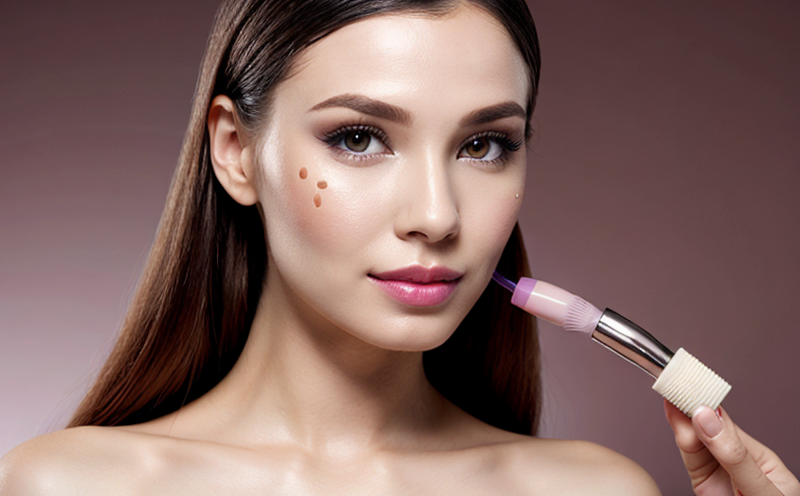In Vitro Oxidative Stress Testing of Cosmetic Formulations
The in vitro oxidative stress testing of cosmetic formulations is a critical process that helps to ensure the safety and efficacy of products before they reach consumers. This method involves using cultured cells or cell lines to assess how different ingredients interact with biological systems, specifically focusing on their potential to induce oxidative stress.
Oxidative stress occurs when there is an imbalance between reactive oxygen species (ROS) production and the ability to detoxify these radicals through neutralizing enzymes. This condition can lead to cellular damage if not managed properly. In cosmetics, certain ingredients may contribute to oxidative stress which could result in adverse effects on skin health or other tissues.
The primary goal of this testing is to identify any components within a cosmetic formulation that might exacerbate oxidative stress levels beyond acceptable thresholds. By employing this approach early in the product development cycle, manufacturers can make informed decisions about ingredient selection and formulation adjustments aimed at minimizing risks while enhancing overall safety profiles.
For quality managers and compliance officers responsible for ensuring regulatory adherence, understanding these tests is essential as they form part of broader cosmetic safety assessments. R&D engineers involved in formulation design will benefit from knowing how various ingredients behave under controlled conditions since this information can guide future iterations towards more effective yet safe products.
Additionally, procurement professionals who source raw materials would do well to consider the results from such tests when evaluating suppliers and materials for potential inclusion into their portfolios. Transparent communication regarding test outcomes helps build trust among stakeholders involved in bringing new cosmetic products to market successfully.
Why It Matters
The importance of oxidative stress testing cannot be overstated as it directly impacts public health and safety. Consumers deserve confidence that the cosmetics they use do not pose unnecessary risks, especially those who are particularly sensitive to environmental factors or have pre-existing conditions.
By incorporating in vitro methods into their workflows, companies demonstrate a commitment to scientific rigor and transparency. These approaches provide valuable insights into ingredient behavior without exposing individuals to harmful substances during preliminary stages of research and development.
The use of alternative testing methodologies aligns with growing trends towards reducing reliance on animal testing wherever possible. This shift not only benefits the environment but also fosters innovation by encouraging creative thinking around non-traditional yet effective assessment techniques.
Applied Standards
| Standard | Description |
|---|---|
| ISO 10993-5:2016 | Guide for in vitro tests on skin and mucous membranes. |
| ASTM E847-18a | Standard guide for selection of biological test systems used to assess oxidative stress potential of cosmetic ingredients. |
| EN 935:2015 | Biological evaluation of medical devices – Particular aspects related to the use of cultured cells in vitro for assessing biocompatibility. |
| IEC TR 62784-1:2019 | Guide on the application of in vitro methods to assess potential health effects of chemicals and mixtures used in cosmetics. |
The above standards serve as guidelines for conducting accurate and reliable tests. They ensure that all parties involved understand what constitutes acceptable practices within the industry. Compliance with these standards is crucial not only for regulatory approval but also to maintain good standing among peers.
Environmental and Sustainability Contributions
The implementation of in vitro oxidative stress testing contributes positively to both environmental sustainability efforts and corporate social responsibility initiatives. By minimizing the need for animal testing, laboratories adopt more humane practices that align with ethical principles.
This shift also reduces resource consumption associated with traditional laboratory animals used in similar studies. Furthermore, by promoting efficient use of resources through advanced technology applications like high-throughput screening assays, labs contribute to long-term reductions in waste generation and energy usage.





